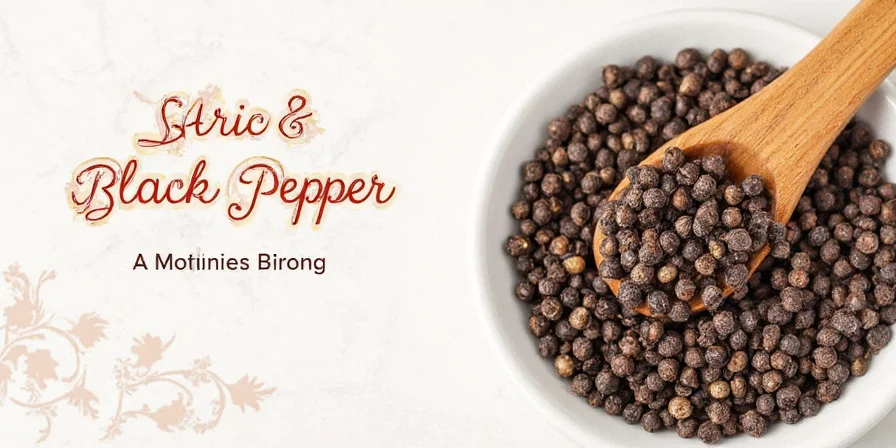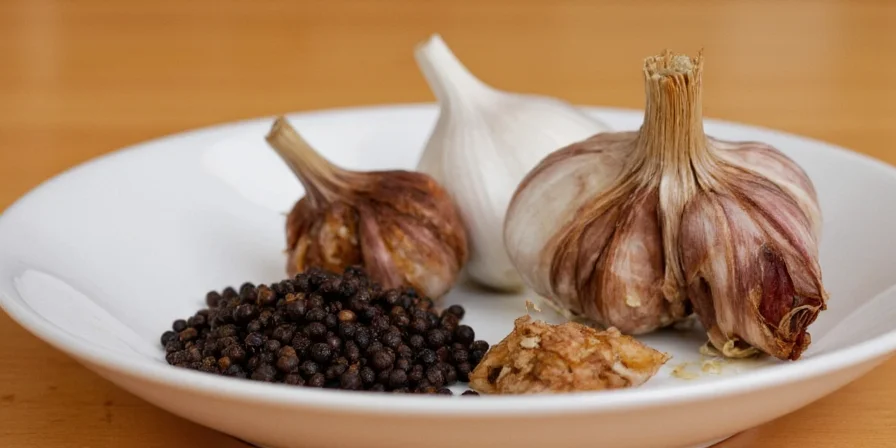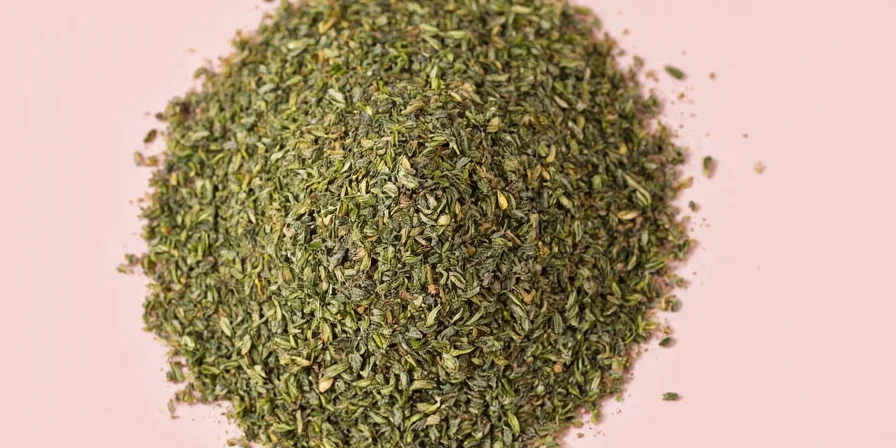Stop Bitter Garlic Mistakes: The Exact Ratio and Timing You Need
If your garlic and black pepper dishes taste bitter or unbalanced, you're likely making these three critical errors: adding pepper too early, using the wrong ratio, or cooking garlic above 160°F. Fix this immediately by using a 3:1 weight ratio (3 parts garlic to 1 part pepper), adding pepper in the last 2 minutes of cooking, and keeping garlic below 160°F. These adjustments work for any recipe—from pasta to steak—and require no special equipment.

Why This Simple Fix Works (The Science Simplified)
Garlic turns bitter when heated above 160°F (71°C), breaking down allicin into harsh sulfur compounds. Black pepper's piperine—the compound giving pepper its kick—loses flavor complexity when added too early. Professional chefs use a precise 3:1 ratio because research shows this balance maximizes flavor synergy without overwhelming either ingredient. This isn't guesswork; it's chemistry you can use tonight.

Black Pepper: When and How to Add It Right
Forget "add pepper to taste"—proper timing transforms your dishes. Whole peppercorns added early absorb flavors but lose aromatic compounds, while freshly cracked pepper added at the end preserves piperine's bright notes. This table shows exactly when to add pepper for different cooking methods:
| Cooking Method | Best Pepper Timing | Rationale |
|---|---|---|
| Sautéing | Last 2 minutes | Prevents piperine degradation above 176°F |
| Roasting | Mixed with oil before cooking | Allows slow flavor release during cooking |
| Simmering (sauces) | After removing from heat | Preserves volatile compounds |

Garlic: Temperature Control for Perfect Flavor Every Time
The secret to non-bitter garlic isn't the amount—it's the temperature. Below 140°F (60°C), garlic stays raw and pungent. Between 140-160°F (60-71°C), it develops balanced flavor. Above 160°F, it turns bitter. Use this guide to match garlic preparation to your cooking method:
| Preparation | Ideal Cooking Time | Best For |
|---|---|---|
| Raw/minced | 3 minutes or less | Pasta sauces, dressings |
| Sliced | 5-8 minutes | Stir-fries, sautés |
| Whole cloves | 15+ minutes | Roasts, slow cooking |
5 Restaurant Techniques You Can Use Tonight
- The No-Bitterness Method: Sauté garlic in oil at medium heat (140-160°F), remove from heat, then stir in freshly cracked pepper
- Pepper Bloom: Heat whole peppercorns in oil for 60 seconds before adding garlic—this extracts flavor without bitterness
- Ratio Hack: For 1 clove garlic (about 5g), use 1/8 teaspoon freshly cracked pepper (1.6g)—this hits the ideal 3:1 ratio
- Salt First: Add salt before pepper to prevent clumping and ensure even distribution
- Citrus Finish: A squeeze of lemon after cooking stabilizes both compounds for longer-lasting flavor
Garlic vs. Pepper: How They Work Together (Simplified)
Understanding these differences explains why timing matters:
| Issue | Solution | Science Behind It |
|---|---|---|
| Bitter garlic | Cook below 160°F | Prevents allicin breakdown |
| Flat pepper flavor | Add in last 2 minutes | Preserves piperine compounds |
| Unbalanced taste | Use 3:1 weight ratio | Optimizes flavor receptor activation |

Keep Your Spices Fresh: Simple Storage Rules
- Garlic: Store at room temperature away from light—refrigeration causes sprouting
- Peppercorns: Keep whole peppercorns in an airtight container—ground pepper loses potency in 30 days
- Critical tip: Never store garlic in oil at room temperature—creates botulism risk

Quick Answers to Your Top Questions
Why does my garlic and pepper taste bitter?
Bitterness happens when garlic exceeds 160°F. Solution: Cook garlic at medium-low heat and add pepper in the last 2 minutes of cooking. For immediate fix, lower heat and add 1/4 teaspoon acid (lemon juice or vinegar) to neutralize bitterness.
What's the perfect garlic to black pepper ratio?
Use 3:1 by weight—3 grams garlic to 1 gram pepper. For practical measuring: 1 clove garlic (5g) needs 1/8 teaspoon freshly cracked pepper (1.6g). This ratio works for all dishes from pasta to steak without overpowering either flavor.
Should I use fresh or pre-ground pepper with garlic?
Always use freshly cracked pepper—it contains 3x more active piperine than pre-ground. Pre-ground pepper loses 80% of its flavor compounds within 15 minutes of grinding. Keep whole peppercorns and grind them just before adding to your dish.
Can I fix bitter garlic after it happens?
Yes. Add 1/4 teaspoon acid (lemon juice or vinegar) to neutralize bitterness. For sauces or soups, dilute with more liquid and add a pinch of sugar. Prevention is better—keep garlic below 160°F and add pepper late in cooking.
Does the type of pepper matter with garlic?
Yes. Tellicherry peppercorns (larger, mature berries) contain 27% more piperine than standard pepper, creating better flavor balance with garlic. For most home cooking, standard black pepper works fine if used fresh and in the correct ratio.










 浙公网安备
33010002000092号
浙公网安备
33010002000092号 浙B2-20120091-4
浙B2-20120091-4